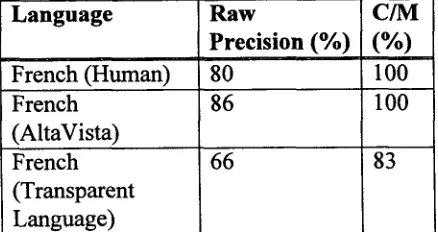Cross Language Multimedia Information Retrieval
Full text
Figure

Related documents
In this paper, we present a sentence aligner which is based on a cross-language information retrieval approach and combines different informa- tion sources
In this paper, we investigate cross language information retrieval (CLIR) for Chinese and Japanese texts utilizing the Han characters - common ideographs used in
IJCNLP 2008 Finding parallel texts on the web using cross language information retrieval Achim Ruopp University of Washington, Seattle, WA 98195, USA achimr@u washington edu Fei
A novel and complex form of information access is cross-language information retrieval: searching for texts written in foreign languages based on native language queries.. Although
Working across a number of European languages – and in the case of one research group, Chinese – it was shown that cross language retrieval was operating at somewhere between 50%
Cross-Language Information Retrieval (CLIR) systems enable users to formulate queries in their native language to retrieve documents in foreign languages. Because queries and
feature term DB retrieval document set Web directory (query language version) Web directory (target language version) Feature term extraction module retrieval module
We have thoroughly evaluated this cross-language retrieval model using standard test collections from the CLEF 2001-2003 CLIR campaigns and have shown that our combined model,